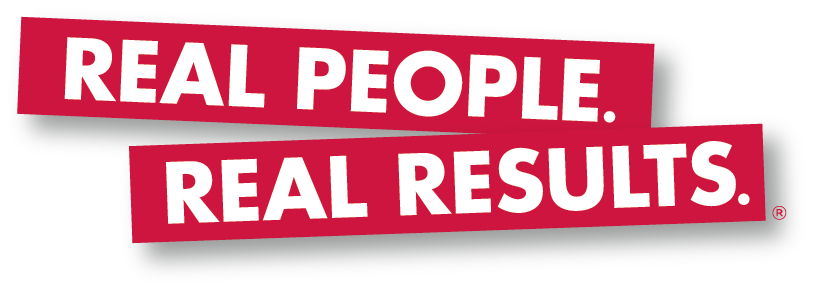If you already don’t have individual employee development plans, now is the time to implement them. These plans help reduce uncertainty, charts path of success and growth and ensure your employees are focused and optimally communicated with. Employee development plans should include: DISC Profile (personality style profile), Learning style, Education plan, Career plan.
A personality profiles identifies dominant personality traits which identify the best ways and methods to communicate with particular individuals. Adding in learning styles methodology enhances communication further. Understanding more about how your employees think, behave naturally and respond to data, can make it easier to bridge the gaps that arise when communications breakdown.
SOURCE: https://www.discprofile.com/what-is-disc/overview/
Your employess will fall into four major groups; 1. Dominance; 2. Influence; 3. Steadiness; or Conscientiousness. Each of these prominent personality identifiers helps you not only communicate more effectively it helps you understand how your team may respond to input, feedback and stress. Digging deeper, lets see what unique traits and behaviors manifest in each group. Discprofile.com provides more detail for each profile and styles, what follows are excerpts from this website.
The D’s: DOMINACE
“Person places emphasis on accomplishing results, the bottom line, confidence” (Discprofile.com, 2020).
Behaviors:
– Sees the big picture
– Can be blunt
– Accepts challenges
– Gets straight to the point
The employee identified as Dominant or in the Dominance D style:
- is motivated by winning, competition and success.
- prioritizes accepting challenges, taking action and achieving immediate results.
- is described as direct, demanding, forceful, strong willed, driven, determined, fast-paced, and self-confident.
- may be limited by lack of concern for others, impatience and open skepticism.
- may fear being seen as vulnerable or being taken advantage of.
- values competency, action, concrete results, personal freedom, and challenges.
Goals:
- unique accomplishments
- new opportunities
- control of audience
- independence
Will need to expend more energy to:
- show patience
- display sensitivity
- get into the details
- allow deliberation
When communicating with D-style individuals, give them the bottom line, be brief, focus your discussion narrowly, avoid making generalizations, refrain from repeating yourself, and focus on solutions rather than problems.
The I’s: Influence: “Person places emphasis on influencing or persuading others, openness, relationships” (discprofile.com, 2020).
Behaviors
– Shows enthusiasm
– Is optimistic
– Likes to collaborate
– Dislikes being ignored
A person with an i style
- is described as convincing, magnetic, enthusiastic, warm, trusting and optimistic
- prioritizes taking action, collaboration, and expressing enthusiasm
- is motivated by social recognition, group activities, and relationships
- may fear loss of influence, disapproval and being ignored
- values coaching and counseling, freedom of expression and democratic relationships
- may be limited by being impulsive and disorganized and having lack of follow-through
Goals
- victory with flair
- friendship and happiness
- authority and prestige status symbols
- popularity
Will need to expend more energy to:
- research all the facts
- speak directly and candidly
- stay focused for long periods
- follow-through completely
When communicating with i-style individuals, share your experiences, allow them time to ask questions and talk themselves. Focus on the positives, avoid overloading them with details, and don’t interrupt them.
The S’s: Steadiness “Person places emphasis on cooperation, sincerity, dependability” (discprofile.com, 2020)
Behaviors
– Doesn’t like to be rushed
– Calm manner
– Calm approach
– Supportive actions
A person with an S style
- is motivated by cooperation, opportunities to help and sincere appreciation
- prioritizes giving support, collaborating and maintaining stability
- is described as calm, patient, predictable, deliberate, stable and consistent
- may be limited by being indecisive, overly accommodating, and a tendency to avoid change
- may fear change, loss of stability, and offending others
- values loyalty, helping others and security
Goals:
- personal accomplishments
- group acceptance
- power through formal roles and positions of authority
- maintenance of status quo and controlled environment
Will need to expend more energy to:
- quickly adapt to change or unclear expectations
- multitask
- promote themselves
- confront others
When communicating with the S style individuals, be personal and amiable, express your interest in them and what you expect from them, take time to provide clarification, be polite, and avoid being confrontational, overly aggressive or rude.
The C’s: Conscientiousness “Person places emphasis on quality and accuracy, expertise, competency” (discprofile.com, 2020)
Behaviors
– Enjoys independence
– Objective reasoning
– Wants the details
– Fears being wrong
A person with a C style
- is motivated by opportunities to gain knowledge, show their expertise, and produce quality work
- prioritizes ensuring accuracy, maintaining stability, and challenging assumptions
- is described as careful, cautious, systematic, diplomatic, accurate and tactful
- may be limited by being overcritical, over analyzing and isolating themselves
- may fear criticism and being wrong
- values quality and accuracy
Goals:
- objective processes
- correctness
- stability and reliability
- gaining knowledge and expertise
- personal growth
Will need to expend more energy to:
- let go of and delegate tasks
- compromise for the good of the team
- join in social events and celebrations
- make quick decisions
When communicating with a C-style individual, focus on facts and details; minimize “pep talk” or emotional language; be patient, persistent, and diplomatic.
SOURCE: https://www.discprofile.com/what-is-disc/overview/
To further improve communication, you need to understand how your team members learn. The type of learning style an employee has also helps you in guiding and communicating with them more effective. There are three types of learning modalities; Visual, Auditory or Kinesthetic.
Visual Learners tend to:
- Need an overall view and purpose
- Cautious until mentally clear about an issue or project
- Are appearance-oriented in both dress and presenting
- Are neat and orderly
- Speak quickly
- Are good long-range planners and organizers
- Are observant of details
- Are good spellers and can actually see words in their minds
- Memorize by visual association
- Usually are not distracted by noise
- Often know what to say but can’t think of the right words
- Have trouble remembering verbal instructions unless written
- Often ask for people to repeat themselves
- Are strong fast readers
- Doodle during phone conversations and meetings
- Forget to relay verbal messages to others
- Often answer questions with a simple ‘yes’ or ‘no’
- Would rather do a demonstration than make a speech
Auditory learners tend to:
- Talk to themselves while working
- Are easily distracted by noise
- Move their lips and pronounce words as they read
- Enjoy reading aloud and listening
- Can repeat back and mimic tone, pitch and timbre
- Find writing difficult, but are better at telling
- Speak in rhythmic patterns
- Are frequently eloquent speakers
- Like music more than art
- Learn by listening and remember what was discussed rather than seen
- Are talkative, love discussion and go into lengthy descriptions
- Have problems with projects that involve visualization, such as cutting pieces to fit together
- Can spell better out loud than in writing
Kinesthetic learners tend to:
- Speak slowly with long pauses
- Respond to physical rewards
- Touch people to get their attention
- Stand close when talking to someone
- Are physically oriented and move a lot
- Learn by manipulating and doing
- Memorize by walking and seeing
- Gesture a lot
- Can’t sit still for long periods of time
- Can’t remember geography unless they have actually been there
- Use action words
- Like plot-oriented books – they reflect action and body movement as they read
- May have messy handwriting
- Like involved games
- Want to act things out
Once you understand more about your employee’s personality and learning styles it is easier to develop education and training plans as well as career plans to meet their needs. Ultimately, the more in-tune you with your team members are, the more congruent your vision of their job’s priorities and their vision of the same will align.
Test alignment by asking your employee to list the Top 10 Things they need to do in order to do their job effectively and efficiently. If your list of the 10 most important tasks of the job match with the employees view the more productive the organization is. The further apart and the more disparity in the lists indicate where you should focus to bring more alignment.
In normal times, employee relations can be challenging. In times of crisis and uncertainty ensuring communication is effective is even more important. Learn how your employees think and how to best motivate, inspire and make them more effective.






